|
Galapagos Day 4 - Espanola - Hood |
|
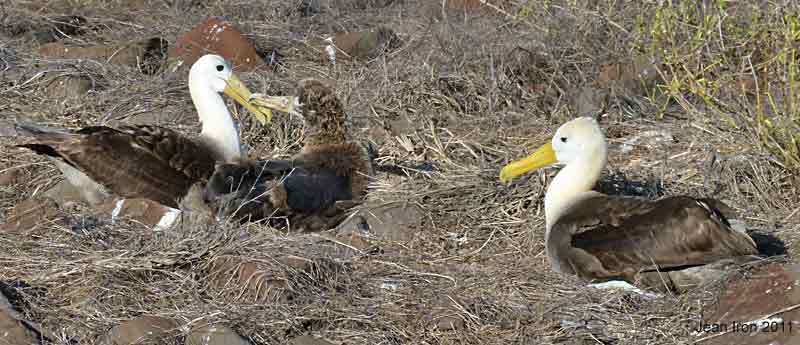 |
|
Waved Albatrosses
breed on Espanola in the Galapagos Islands. Punta Suarez on 14 November 2011. |
|
|
|
Page 5 of 9. Please
scroll down then go to Page 6 |
|
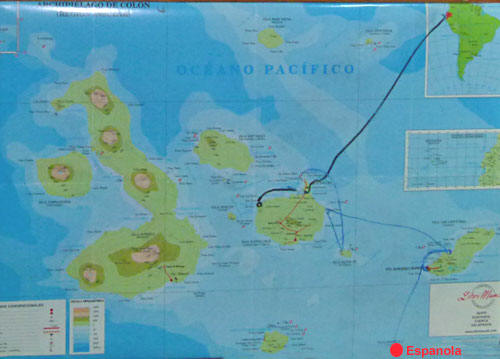 |
|
Espanola is the most
southerly island in the archipelago. In the morning we
visited Gardner Bay, and Punta Suarez in the afternoon. |
|
|
|
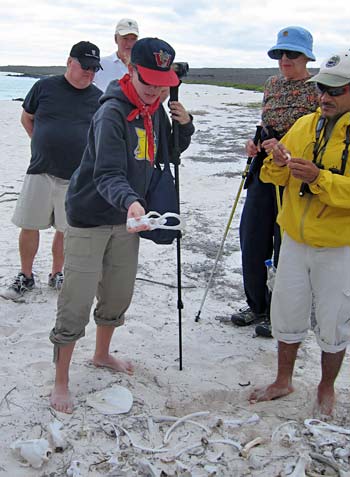 |
|
Kathryn,
an archaeologist, examined
bones on the beach and could determine the age of the deceased sea lion.
Gardner Bay, Espanola. |
|
|
|
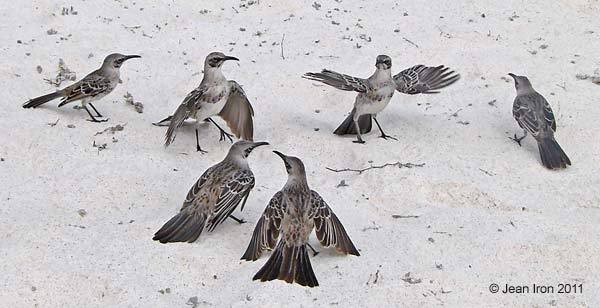 |
|
Hood Mockingbirds are endemic to
Espanola. They have an interesting territorial social structure,
gathering in groups to face-off and display. Slightly
larger than other Galapagos mockingbirds, their bill is pointed
and more curved. Gardner Bay, Espanola on 14 November 2011. |
|
|
|
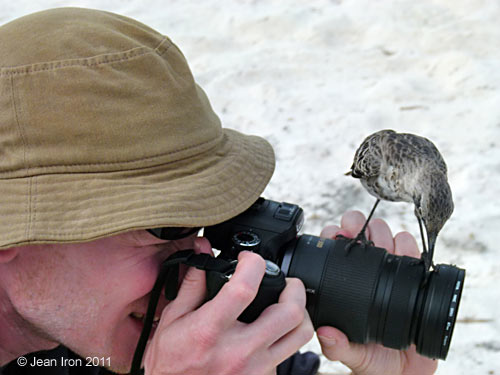 |
|
Hood Mockingbirds are very curious and have no fear of humans. This
one examined George's camera. They tried to get water and food from
us. Gardner Bay, Espanola on 14 November 2011. |
|
|
|
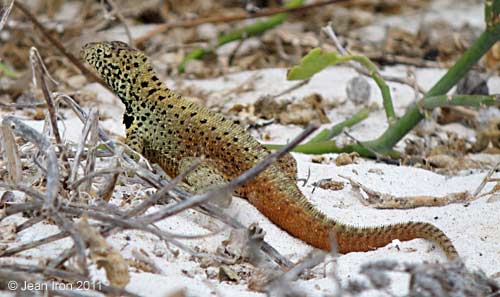 |
|
Endemic Espanola Lava
Lizard Microlophus delanonis at Gardner Bay, Espanola. |
|
|
|
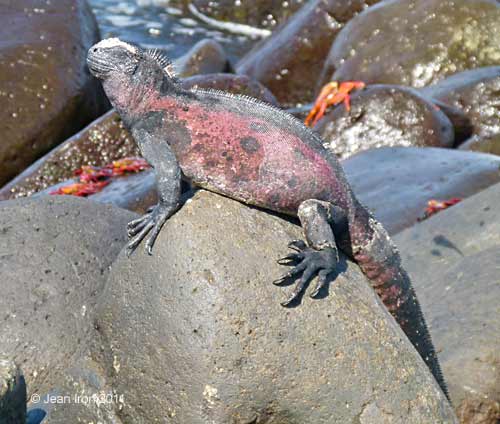 |
|
The endemic Espanola subspecies of Marine
Iguana Amblyrhynchus cristatus venustissimus is the most
brightly coloured of all Galapagos marine iguanas. Punta Suarez on
Espanola. |
|
|
|
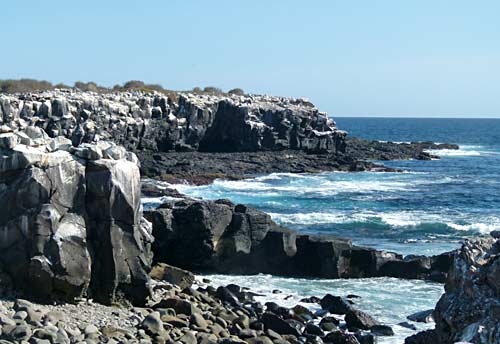 |
|
Waved Albatrosses,
Nazca and Blue-footed Boobies, Red-billed Tropicbirds breed on the cliffs at Punta Suarez. |
|
|
|
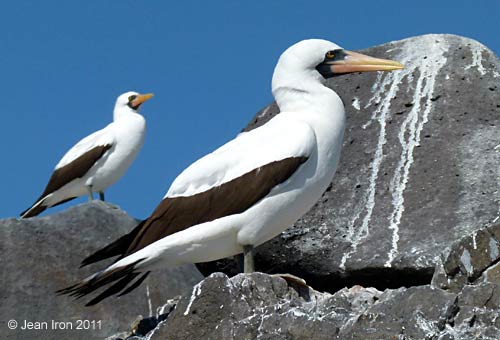 |
|
Many breeding Nazca Boobies
are in the colony at Punta Suarez. |
|
|
|
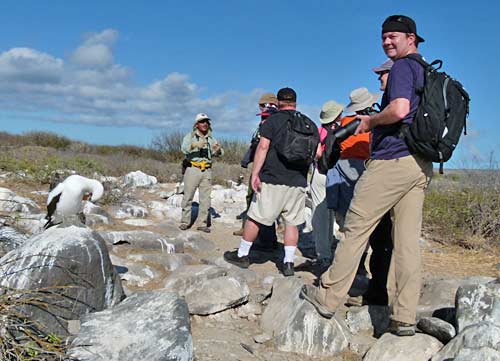 |
|
Our group passed Nazca
Boobies close to the rocky
trail. Punta Suarez, Espanola. |
|
|
|
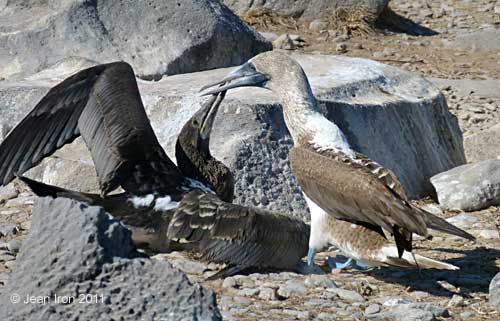 |
|
Adult Blue-footed Booby
feeding young at Punta Suarez. |
|
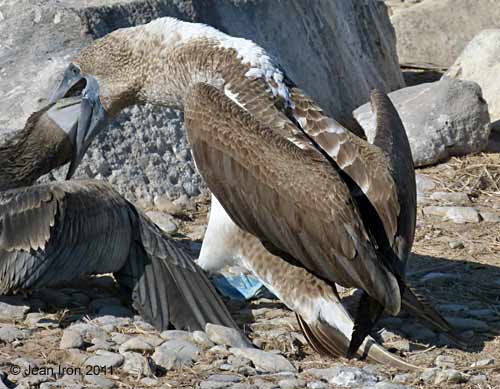 |
|
The young booby thrust its
bill into the parent's throat. |
|
|
|
 |
|
Endemic adult Galapagos Hawk at Punta
Suarez on Espanola. Adults are all dark. This hawk is
widespread in low numbers on all islands except Genovesa. |
|
|
|
Now
go to
Page 6 - Santa Cruz Island |
|
|